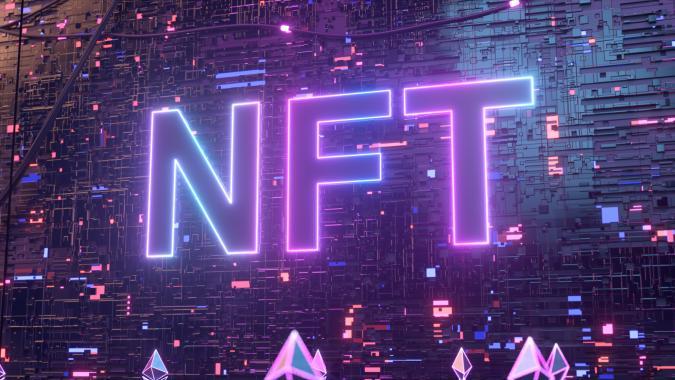NFTs - non-fungible tokens - a new blockchain-based technology used to represent digital assets such as pictures, songs, digital real estate, etc. They are well known for their immutability, durability, security, etc.
Besides, NFTs, as you know, are indivisible because they are used to represent digital assets and if an asset like a picture or a song is split into parts will lose its value. However, there are many cases in real life in which NFTs’ ownership needs to be divided into parts. For example, when more than one writer composes an NFT song or when an NFT’s price is so huge that one person cannot afford it, they need to split the NFT into parts for many people to own, which creates fractional NFTs (F-NFTs).
What are Fractional NFTs?
Fractional NFTs are just fractions of an original NFT that is divided into smaller pieces for many people to claim their ownership over it. These Fractional NFTs are used to represent a percentage of ownership of the holders and they can be traded or exchanged like the original one but with a smaller value and at a lower price.

The Doge NFT is divided into 17 billion pieces called DOG tokens
How do Fractional NFTs work?
Since NFTs are unforgeable and indivisible, they are used as representations of digital assets. However, Fractional NFTs are still needed to represent fractions of NFT, so is an NFT really divisible?
In fact, before becoming fractions, the original NFTs are locked in smart contracts on a blockchain first. NFTs can now work on many blockchains like Polygon, Solana, Cardano. However, they mostly concentrate on the Ethereum network as ERC-721 tokens or ERC-1155 tokens. When the process begins, original NFTs will be fractionalized by a smart contract that uses a number of tokens, usually ERC-20, that link to the original NFTs. That means the NFT is not broken into smaller pieces, but they are just represented by another amount of tokens.
While you cannot fix your picture if you cut it into parts, the fractionalization process can be reversed. It is set up in the smart contract fractionalizing an NFT that fractionals NFTs can be bought and transformed back into the original NFT as a whole.

Fractional NFTs can be collected and transformed back to the original NFT
Why do we need Fractional NFTs?
1. Higher Liquidity
As we know, NFTs are valuable because of their scarcity. Every NFT is unique and cannot be replaced. It leads to the fact that many NFTs can reach to a super high price. That’s why it is hard to own an authentic famous NFT at an affordable price. It can be said that NFTs’ liquidity is very low as it’s impossible to find many sources that provide the same NFT.
Therefore, Fractional NFTs were born and allowed many people to own portions of an NFT at the same time at a lower price. They have more liquidity as it is easier to find and buy a part of an NFT when it is divided into many parts.
2. Co-ownership
One notable feature of NFTs is that they cannot be possessed by more than one owner at once. And this causes the problem that it’s hard for creators to claim their ownership over a song or a picture as an NFT on a blockchain. Henceforth, Fractional NFTs are the best solution for it as it allows many people to own an NFT at one time.
With Fractional NFTs, many artists can share artwork on a blockchain and gain benefits at the same time. Particularly, the royalties when a fragment of an NFT is sold will be equally distributed to the creators. When the value of a fragment increases, the value of the original NFT will accordingly be higher.
3. Affordable price
The price of an NFT can continuously increase by many factors such as the transaction history, its interoperability, whether it represents a real-life asset or the belief that the price will increase in the future. Nevertheless, when an NFT reaches an exorbitant price, it is hard to find the buyer as not many people have that much money to invest.
Sub-dividing an NFT help to allow more people to participate in the investment of an NFT because the price of a fragment is lower while that NFT can still be traded and increase in value.
Bottom line
NFT fragmentation is a great solution for many problems about NFTs such as low liquidity, inadequacy in ownership or unaffordable price. This is also a good signal showing that the NFT marketplaces, in particular, and the blockchain applications, in general, are developing and improving to overcome disadvantages and provide users with the best experiences.
#blockchain #bitcoin #cryptocurrency #crypto #ethereum #btc #forex #bitcoinmining #trading #money #cryptocurrencies #eth #bitcoinnews #bitcoins #investment #business #cryptonews #cryptotrading #coinbase #invest #investing #blockchaintechnology #entrepreneur #binance #nft #litecoin #forextrader #trader #bitcointrading #bitcoincash






